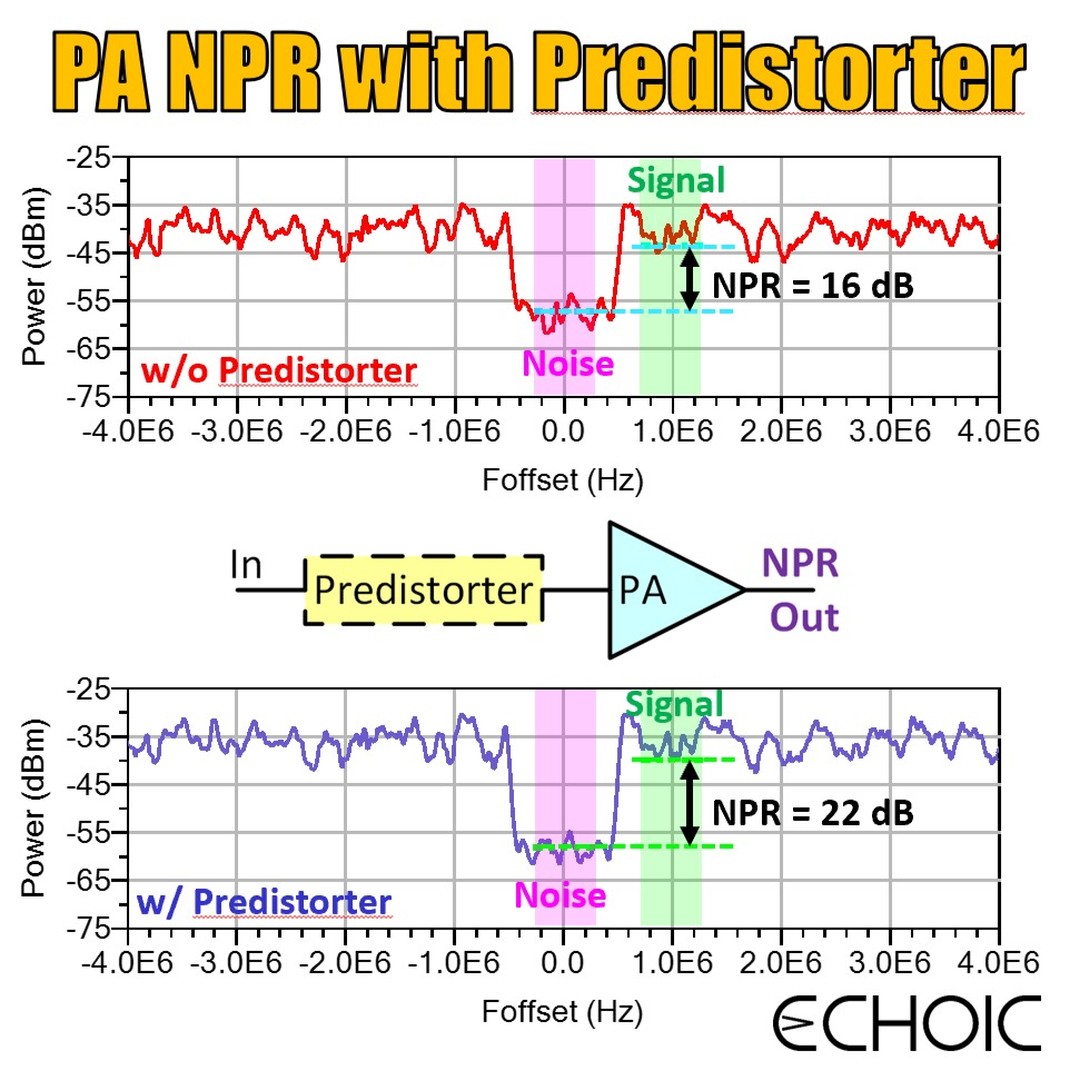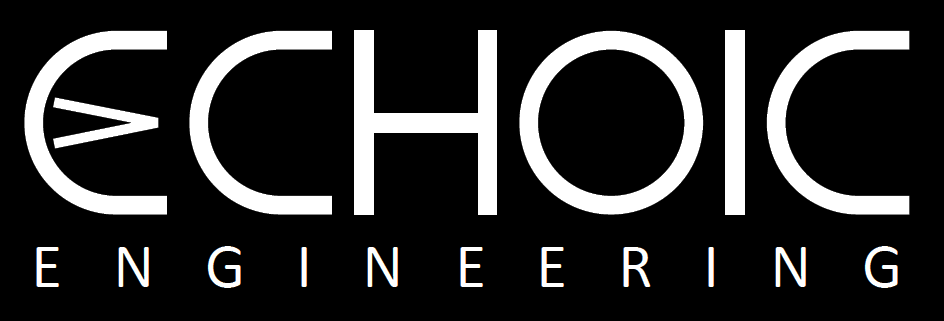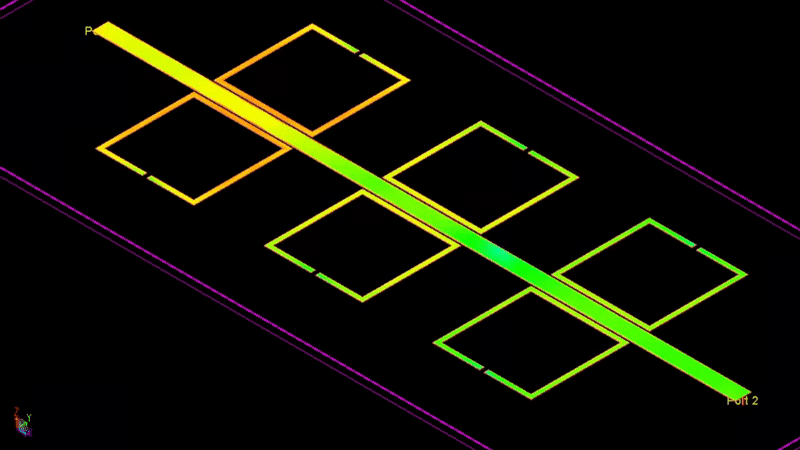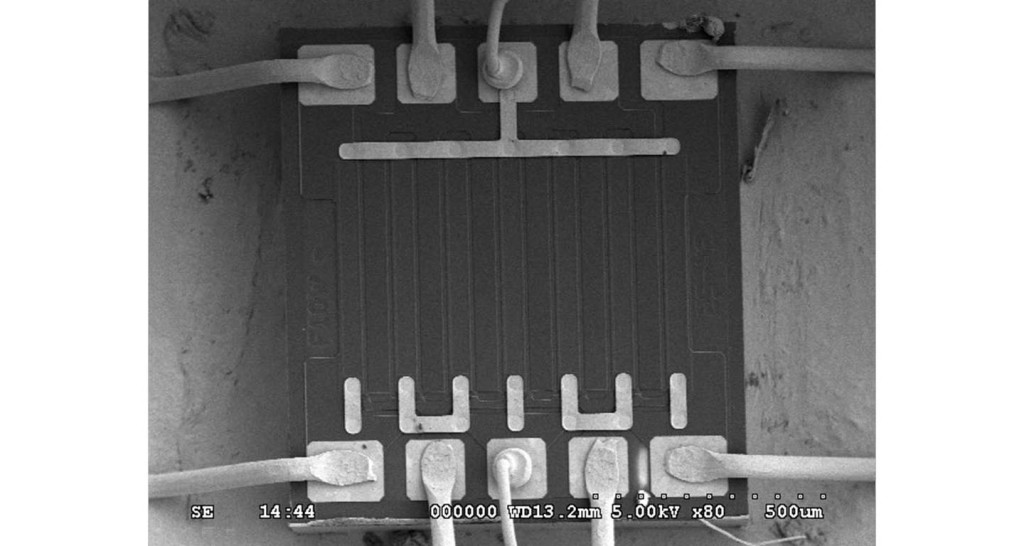Latest Posts
COMMITTED TO SHARING RF AND MICROWAVE KNOWLEDGE


Echoic RF Engineering
Custom RF and Microwave Design and Consulting. Specializing in RF circuits and systems, PAs, LNAs, mixers, GaN, passives and interconnect.
EM simulation can help RF microwave designers visualize the behavior between connector and PCB. Here, we build upon our connectors/PCB simulation to characterize the RF performance across frequency.
In the animation, we can see energy flowing from one connector through the coplanar waveguide PCB structure to the connector at the other end. This result verifies the configuration and helps us identify any anomalies (RF leakage, etc).
This analysis is performed across frequency to extract the return loss (S11) and the insertion loss (S21) of the device. A low S11 is highly desirable as it represents how much power is reflected from the incident connector and therefore how well matched it is to the signal generator. A high S21 is desirable as this represents how much loss there is across the transmission. A peak S11 of -10dB at 2GHz is acceptable but not great. A minimum S21 of -0.6dB at 2GHz is also acceptable.
EM simulations enable the designer to choose the appropriate connector design and PCB elements (trace widths, clearances, via density and placement) for high-performance, low loss connectivity.
#connectors #impedance #PCB #rfsystems #rfic #mmic
#rfengineering #rf #microwave #technology #microstrip #engineering #design #circuitdesign #circuits #em
#electromagnetics #waves
6 months ago
The performance of edge-launch microwave connectors depends on their physical design and can vary wildly between manufacturer. A well-matched connector providing a low-reflection transition from coax to planar is crucial for high performance microwave and millimeter-wave PCB designs. This will result in low VSWR and return loss.
Here we have two end-launch connectors mated to a PCB and electromagnetically simulated at 2GHz. The simulation shows the fields as the signal propagates through the PCB. We are also able to visualize if the test board is behaving as expected.
EM simulations enable the designer to choose the appropriate connector design and PCB elements (trace widths, clearances, via density and placement) for high-performance, low VSWR connectivity.
#connectors #impedance #PCB #rfsystems #rfic #mmic #rfengineering #rf #microwave #technology #microstrip #engineering #design #circuitdesign #circuits #em #electromagnetics #waves
7 months ago

The Predistorter from our last two posts has already demonstrated marked improvement in enhancing PA linearity.
Here, we put the Predistorter under our wideband noise power ratio test to see how much improvement we can get. Without the Predistorter, our PA only achieves NPR = 16dB at the output. However, once we apply our Predistorter, that number increases to NPR = 22dB, a respectable +6dB improvement!
The use of the Predistorter has shown to provide linearity improvement in single-tone, two-tone and wideband multicarrier tests. Predistorter + PA improvement summary:
•P1dB = 17.5dB increased to 26dBm –> +8.5dB !!
•IIP3 = 14dBm increased to 26dBm –> +12dB !!
•NPR = 16dB increased to 22dB –> +6dB !!
Echoic Engineering creates system level models and simulations for our client’s needs. Free free to reach out to learn more!
#noise #power #amplifiers #rf #microwave #rfengineering #rfic #mmic #poweramplifiers #PA #circuits #systems #integratedcircuits #technology #engineering #gain #power #linearity #nonlinearity #distortion #predistortion #gan
8 months ago






















